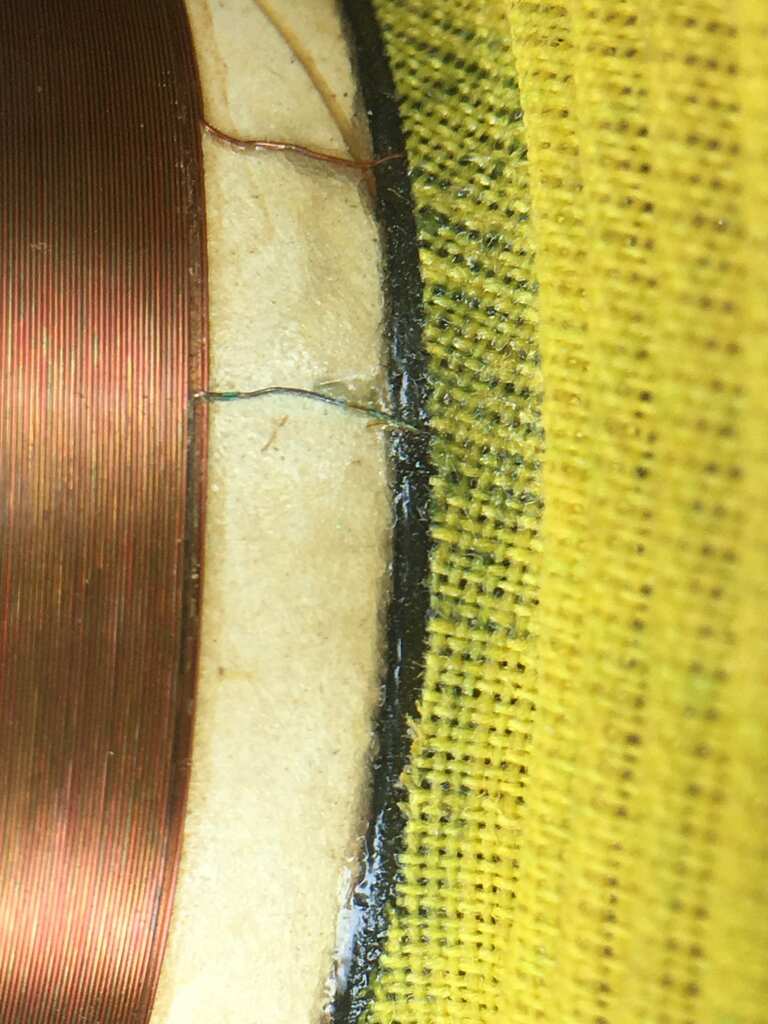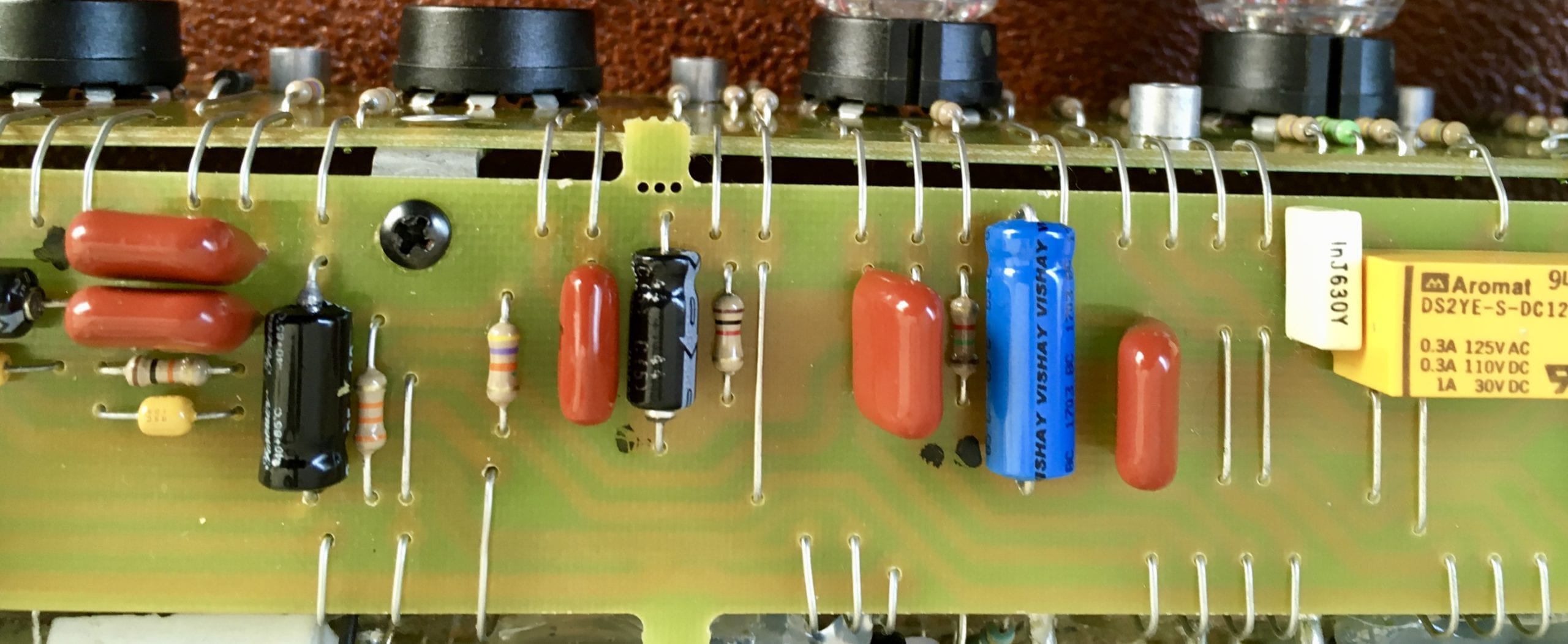A Peavey Classic 30 Restoration was undertaken. Initially it was taken in for just a repair. It had sat in a garage for many years. There was rust on the face plate so a good indication dampness had got to the amp too.
The amp had been switched on by the owner and it was totally dead.
Having gone through the amp I can now provide details of the autopsy.
The electrolytic capacitors in the HT and low volts supply had all failed. This in turn shorted out the diode bridges on the HT and the low volts destroying the diodes. The fuses did not blow because the diodes blew.
The speaker had failed too. This was due to corrosion of the speaker coil. First time I had seen corrosion as a source of the speaker failure.

Speaker Coil with corrosion
The power supplies were sorted out and a good replacement second speaker was fitted. The amp was tested on a dummy load and the output was a big fat zero. There are three 12AX7’s fitted and the heaters are in series. The heaters were off. If one valve goes off all three go off.
A bad connection was found and repaired. This amp is built from three different pcb’s and the three boards are linked with lots of wire links. I broke a couple of them when unfolding the amp to work on it. These were duly replaced. You have to take care unfolding the three boards to make sure to these pcb links are not fatigued. You can see these in the picture below.

The output valves – 4 EL84’s were totally worn out and replaced. The amp was now basically working apart of strange oscillations. The decoupling capacitors on the cathodes of the 12AX7’s had failed so these were replaced. The amp was hooked up and tested and was now ready to gig for many more years .
The final step in this Peavey Classic 30 Restoration was a PAT test
We recommend the following valves for this amp
